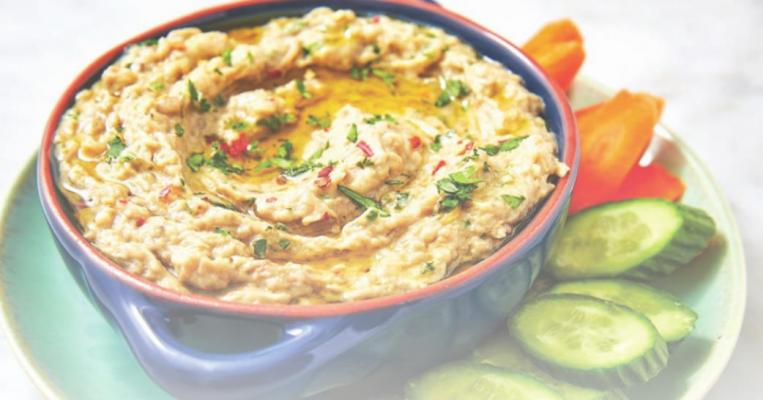Celebrate a World of Flavors
That’s the theme of National Nutrition Month this March. Highlighting March as National Nutrition Month started back in 1980. The goal is to stress the importance of a balanced diet and exercise.
The idea behind the 2022 theme is to embrace global cultures, cuisines and inclusion. Enjoying different flavors of the world is a chance to learn more about your own food culture as well as those that may not be so familiar. Familiar ingredients can be presented in new ways and new foods may remind you of things you already know and love. You may also come across ingredients and flavors you’ve never experienced before.
Trying foods and recipes from various cultures in one way to incorporate different flavors into your healthy eating routine. And trying new flavors and foods from various cultures can also help you increase the variety of foods you eat. That’s the premise of healthy eating: variety, moderation and balance.
Looking to global cuisines also is a smart alternative for those who get bored eating the same thing over and over. That’s especially important because the way foods taste is a major factor in what kids and adults do -- or don’t -- eat.
Try an international breakfast to break the monotony and expand your world.
Here are a few examples:
--Mexico -- It’s not uncommon to eat tortillas with beans and shredded beef or chicken for breakfast, providing protein and fiber (from the beans).
--Israel -- An Israeli breakfast includes both vegetables and fruit as well as healthy fats. A typical breakfast consists of olives, cheese, vegetables, bread and fresh juices. Try threading chunks of cheese and vegetables such as peppers, tomatoes, cucumbers and pitted olives on wooden skewers. Yep, it’s breakfast food.
--Kenya -- A traditional Kenyan breakfast includes porridge, made from corn, sorghum, or millet. It’s often served with peanuts, fish or boiled sweet potatoes or cassava.
--India -- Indian breakfasts often are vegetarian. A favorite is vegetable upma, a hot breakfast made from farina and vegetables including onions, carrots and green beans and spiced with ginger, curry leaves, mustard seeds and cumin. The warm morning meal provides plenty of iron from fortified grains and dietary fiber from vegetables.
--Peru -- A typical Peruvian breakfast often is a corn or quinoa tamale with papaya and white cheese known as queso fresco. A weekend favorite is stir-fried steak with tomatoes and onions served with bread.
Q and A
Q: Is a slow metabolism to blame for my weight?
A: Only in rare cases do people gain an excessive amount of weight from a medical issue that slows the metabolism, such as Cushing’s syndrome or having an underactive thyroid gland. Weight gain is a complicated process, a combination of genetic makeup, hormonal controls, diet composition and other lifestyle factors such as sleep, physical activity and stress. To be at the right weight, choose a healthy diet and get plenty of exercise.
RECIPE
Here’s a recipe for baba ghanoush, a Mediterranean eggplant dip made from roasted or grilled eggplant, tahini, lemon juice, garlic and olive oil.
BABA GHANOUSH
Servings: 4
2 medium eggplants
1/4 cup tahini 3 tablespoons fresh lemon
3 tablespoons fresh lemon juice
2 tablespoons extra-virgin olive oil, more for serving
2 garlic cloves
1/2 teaspoon sea salt
Finely chopped parsley, for garnish
Pinch of smoked paprika
Pinch of red pepper flakes, optional
Pita and veggies, for serving
Preheat the oven to 400 degrees F and wrap the eggplant in foil. Roast the eggplant for 50 to 60 minutes, or until it is soft and collapses to the touch. Remove from the oven and set aside. Once cool to the touch, peel the skin from the eggplant, removing any big clumps of seeds. Place the flesh in a strainer over a bowl and let stand for 20 minutes to remove excess water. Place the eggplant flesh, tahini, lemon juice, olive oil, garlic and salt in a food processor and pulse until smooth. Transfer to a serving dish; sprinkle with parsley, smoked paprika and red pepper flakes, if using. Serve with pita and veggies. Serves 4 (serving size: 1/4 cup).
Per 1/4 cup: 120 calories; 2 grams protein; 8 grams carbohydrates; 10 grams fat (1 gram saturated); 0 milligrams cholesterol; 4 grams fiber; 190 milligrams sodium.
Charlyn Fargo is a registered dietitian with SIU Med School in Springfield, Illinois. For comments or questions, contact her at charfarg@aol.com or follow her on Twitter @NutritionRD. To find out more about Charlyn Fargo and read features by other Creators writers and cartoonists, visit the Creators website at www.creators.com.

